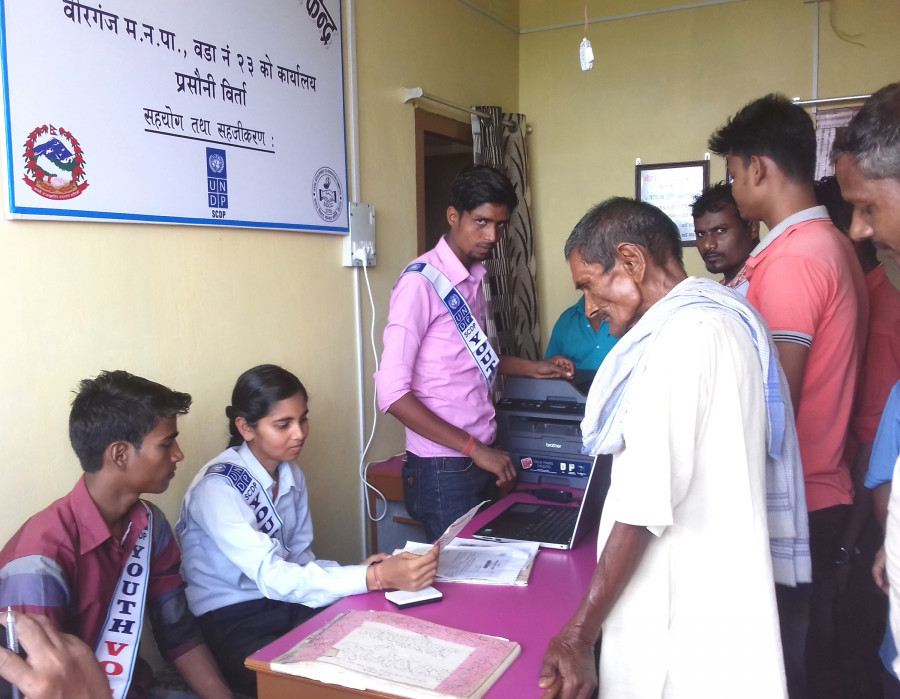Columns
The path of federalism
The time when citizens had to run to the country's capital for minor paperwork has ended.
Khim Lal Devkota
Based on the principles of proportional inclusion and participation, Nepal aims to build an egalitarian society and achieve peace, good governance and development. Towards this end, the constitution has adopted basic principles of democracy such as a competitive multiparty system, civil liberties, fundamental rights, human rights, periodic elections and the rule of law; but it seems the government has shown little regard for the implementation of these provisions.
The Nepali people have dreamed of a revolutionary change for seven decades, and this was fulfilled by the 2015 Constitution, following the 10-year Maoist conflict that ended with the Comprehensive Peace Agreement of 2005, People's Movement of 2006, Interim Constitution of 2007 and declaration of a federal democratic republic, abolishing the 240-year-old monarchy, in 2008.
The constitution basically stands on five pillars. They are federalism, republicanism, secularism, proportional inclusion and rule of law. The originality of the constitution will be lost if attempts are made to dismantle any of these pillars.
Again, citizens expect competent, fair, effective, quality, accountable, sustainable service delivery and good governance from the federal government. If this aspect is fulfilled, there is no alternative to the federal government system. Therefore, now is no time to look for an alternative to federalism.
Protecting the constitution
It is certainly not good for the country's development and permanence to change the constitution and governance system repeatedly. Again, no governance system is bad in itself. If those leading the government are bad, the result will be bad no matter how good the system. What the people want is development, peace, good governance and law and order. This part has been mentioned prominently in the preamble to the constitution.
This constitution was achieved through no small struggle and hardship. There are big movements behind it and stories of myriad struggles. Therefore, there is no alternative to protecting this constitution and the federal system.
The Nepali people have demonstrated time and again for democracy and progressive changes. As a result of these movements, the governance system was changed several times. The present constitution is the seventh. The United States has had the same constitution for more than two centuries, and the governance system has not changed during this period. In Nepal, the governance system has changed at short intervals.
The country will not become rich or poor, developed or underdeveloped, and democratic or autocratic as soon as federalism is established. There are unitary states that are also developed and democratic while some countries with a federal structure are undemocratic and underdeveloped.
In the context of Nepal, there have definitely been some achievements after the federal governance system. Despite the challenges, the provincial and local governments have used the rights granted to them by the constitution. Government employees who have never left Kathmandu Valley have now gone to the subnational levels. But even after five years of federalism, the civil law has not been passed. As a result, there are problems due to insufficient staff at the subnational levels, and the government has not been able to pay attention to this matter.
Expenditure assignment, revenue rights and fiscal transfer, which are important parts of fiscal federalism, have been implemented. From the federal to the local level, democratic institutions have become active. There is a large presence of elected people's representatives at the local level, where elections could not be held for about 20 years due to conflicts and other reasons. Local levels are constitutionally empowered. The situation of citizens having to run to the federal capital for minor paperwork has come to an end. The organs of the state centred in Kathmandu have been moved to the subnational levels. Fiscal resources have been decentralised constitutionally. State organs have become inclusive. There has been a decrease in migration.
New experiment
Nepal started a new experiment in the implementation of federalism through the system of three levels of government. It is natural to have some problems and confusions in the beginning. The problem areas include formulation of laws, implementation of programmes and projects, staff management and resource transfer. Despite being under the sole authority of the provinces, the police and security structures have not been adjusted yet.
The Inter-Provincial Council under the chairmanship of the prime minister, the Inter-Governmental Fiscal Council under the coordination of the finance minister, the Provincial Coordination Council under the coordination of the chief minister and the sectoral committees with ministers as coordinators have not been able to function as expected. It is necessary to focus on a solution to these problems seen at the implementation level.
As the constitution is the basic document of the agreement between the political parties, everyone should accept the federal democratic republic as its backbone and make it successful with real words and deeds.
The implementation of federalism is the need of the day. Every organ, agency, official and individual should build a plan of action to make this happen. The political, administrative and other sectors should have a single destination to convert federalism into real practice.




 12.12°C Kathmandu
12.12°C Kathmandu













%20(1).jpg&w=300&height=200)

